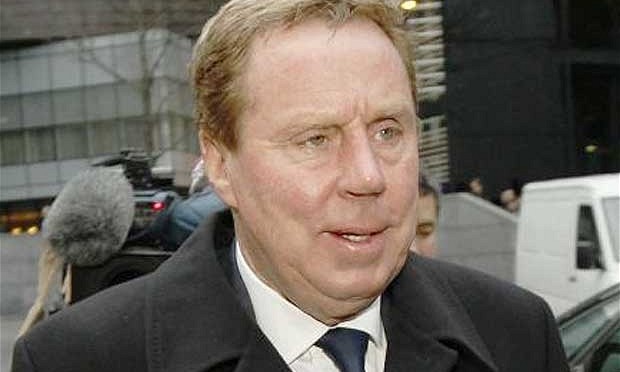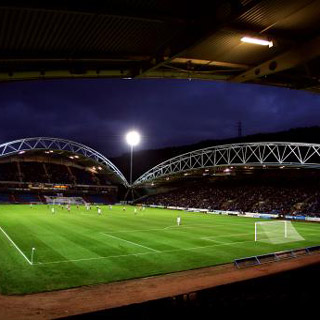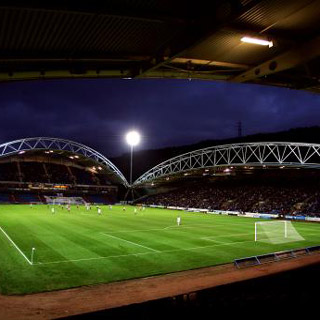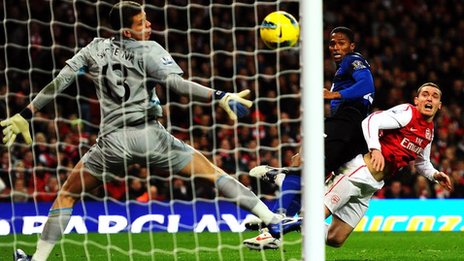4/5 on. Evens. 15/8 by far the highest. Harry Redknapp, given the success he has had at Tottenham, is most certainly the current favourite to become the next permanent manager of England after the departure of Fabio Capello in the summer. However, on this day of trial and tribulation, we at Spoughts felt it apt to consider this seemingly inevitable appointment. The conclusion? Precedent suggests that it is not entirely acceptable to see Redknapp as the next manager.
As Harry Redknapp stands in the dock, accused of receiving bungs that he avoided mentioning for tax reasons, alongside his former Portsmouth chairman Milan Mandaric, thoughts will not be cast back to an event over eleven years ago. We’re nothing but picky here, however, and whenever rumours abound over Redknapp’s imminent appointment, minds cast back to the trial of Jonathan Woodgate and Lee Bowyer.
Whether Harry Redknapp is guilty of the crime he stands accused of or not is not the issue at hand. On the 2nd of November, in the year 2000, Peter Taylor, England caretaker manager, was told by the Football Association that he would not be allowed to include the two Leeds players in his squad for the friendly match against Italy. They stood accused of a racially motivated assault on the streets of Leeds, and the FA therefore told Taylor that whilst the trial was ongoing, the two could not be involved in the England set up. Yet there has not been any consideration of the implications of this precedent on the employment of Harry Redknapp.
Understandably, given the nature of what Redknapp stands accused of, compared to the supposed crime of Bowyer and Woodgate, leeway could be given. The trial may be over well before Capello leaves. Yet the manner in which the next appointment will be made gives cause to our caution. Capello has already announced his departure, and even if one were to suggest the FA is a mildly incompetent, it is unrealistic to suggest that discussions have not even reached preliminary stages as to who the future appointment may be. Redknapp, standing trial in an English court of law, much like Bowyer and Woodgate all those years ago, remains the favourite, despite the fact that England previously wouldn’t have two potentially guilty men represent their team, never mind lead it into the next World Cup.
What Redknapp stands accused of does, however, pale in comparison to what Bowyer and Woodgate stood trial for, and this may be where the discrepancy occurs. The Football Association, so keen to stamp out racist action ten years ago, has however, allowed a situation to arise by which the man leading England into the most imminent tournament could find himself in court for a similar crime. John Terry has had his file passed over to the Crown Prosecution Service regarding the Anton Ferdinand incident, by which he stands potentially accused of using racially aggravated language against Ferdinand. This has led to a series of racially motivation incidents involving Chelsea fans over the previous few months, and therefore, Terry could be seen, in an extreme light, as responsible for inciting these.
Terry remains captain, and no discussions have truly taken place in the media as to the potential for him to lose ‘the armband’. When compared to Woodgate and Bowyer, the positive aspect to Terry’s issues is that he has not, as of the time of writing, been brought to trial. There is no guarantee that he will be. Chances are, however, that if he is, it will be between now and the European Championships. In our view, should Terry’s case come to trial, he should not be allowed to represent the nation, never mind captain the side.
Given the potential for the timing of Terry’s potential problems, he should not be involved in the preparations for the European Championships – until the matter is solved, a defence should not be reliant on a player who by FA precedent should not be allowed to play for the side. Furthermore, discussions should not take place with Redknapp until his trial ends, as to do so would be a violation of the same precedent. This is why I feel it is unacceptable for either man to have a role to play in the present or near future of the England set-up.




